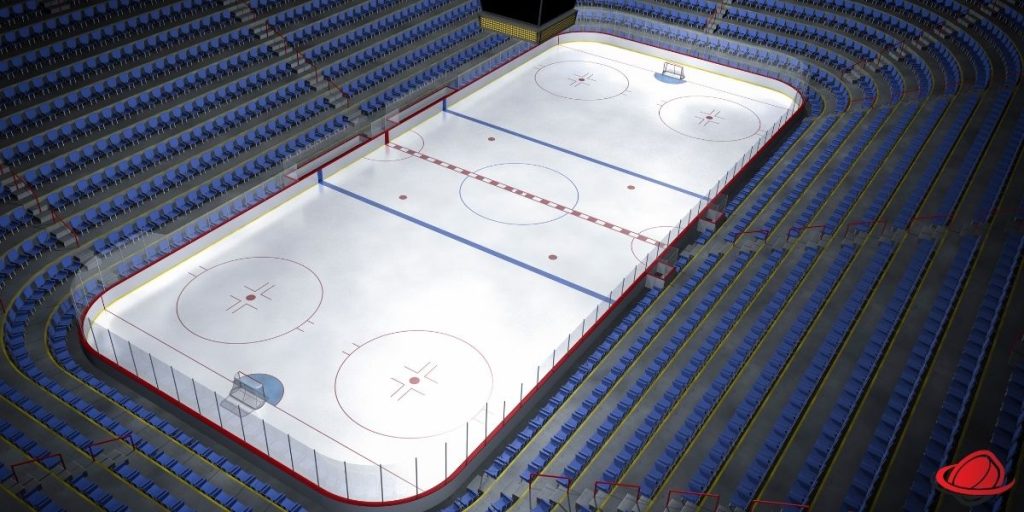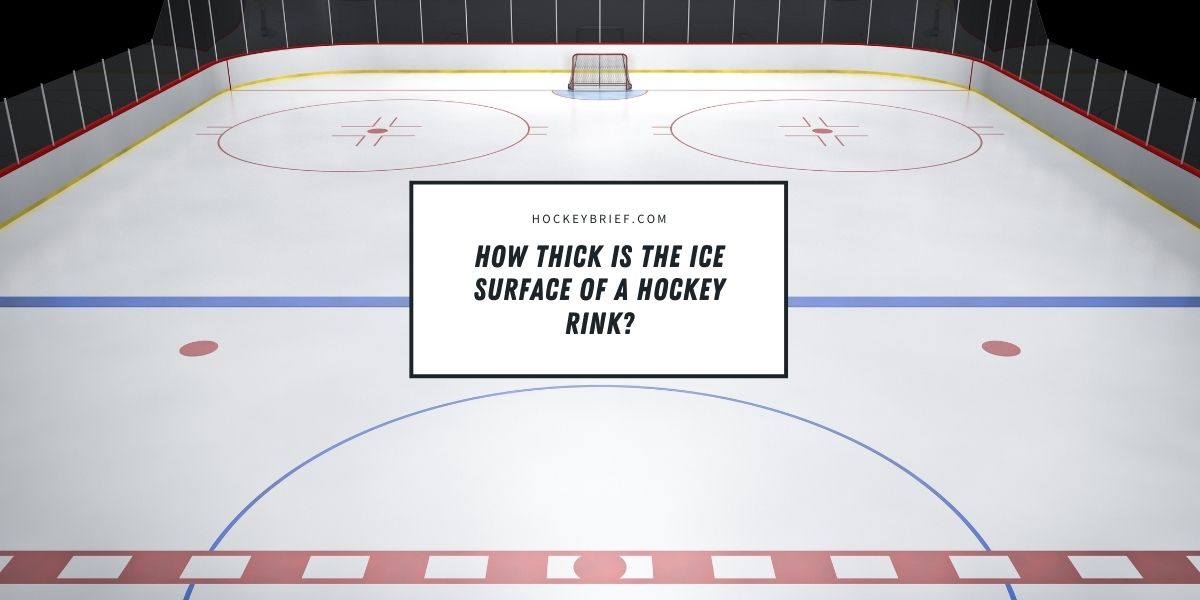Ice hockey is one of the fastest played sports in the world. This is mostly due to the fact it is played on a sheet of ice.
Players on the ice can skate at speeds of up to 30 miles per hour and the ice surface is just one of the factors that determine a player’s skating speed.
If you have ever been to a live hockey game or like to watch it on tv, you may be interested to learn more about the ice surface and its overall thickness.
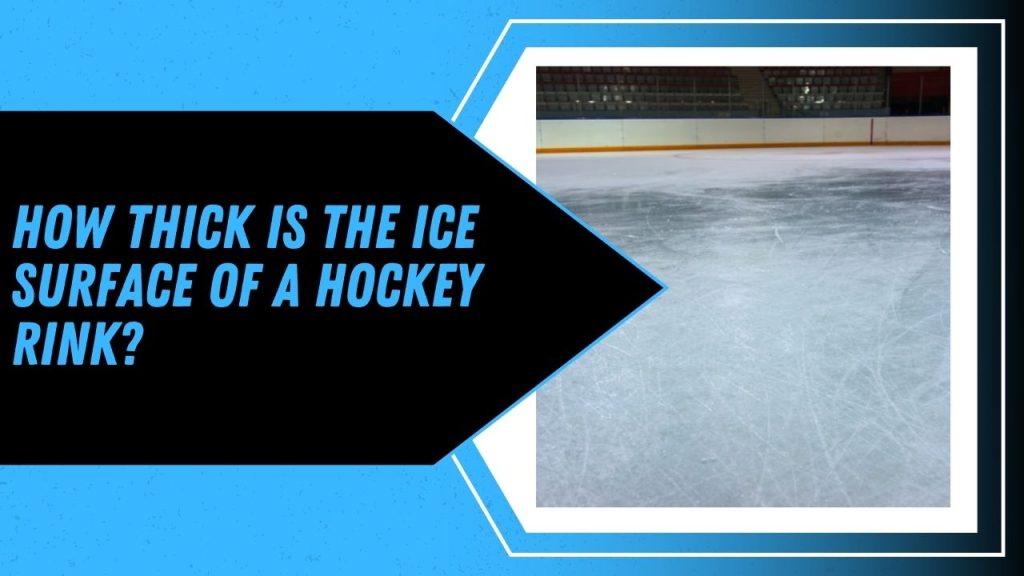
How Thick Is The Ice Surface Of A Hockey Rink?
On average, the ice surface used in the National Hockey League (NHL), is ¾ of an inch or 0.75” thick. This is equal to 1.905 centimeters or 19.05 millimeters. This thickness along with other factors including cooling allows for many players with sharp skate blades to be on the ice at the same time without the ice breaking or cracking.
The ice surface of an outdoor man-made ice rink may be a different thickness. They don’t have to be made the same as NHL ice. In some cases, the ice thickness can be up to 1.5” thick.
The thicker the ice is, the softer and slower it will be. For ice hockey games, thinner ice is better as the ice will be hard, making the game faster overall.
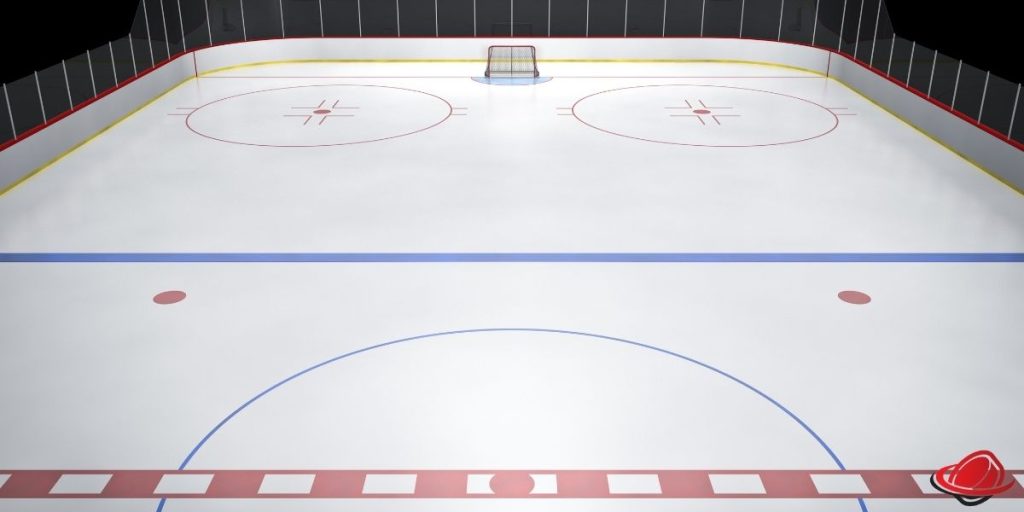
What is the temperature of the ice at a hockey rink?
The temperature of the ice surface at an NHL arena is lowered to 16 degrees Fahrenheit. This temperature is selected to prevent melting and avoid the ice from getting soft.
How do they freeze the ice at a hockey rink?
For the ice hockey surface to freeze and be maintained at the required temperature, a large indirect refrigeration system is used.
This system will pump up to 10,000 gallons of freezing brine water through a system of pipes under the ice. The water is also used on top of an ice-bearing slab.
The brine water used is just regular water with dissolved alkaline salts in it which gives a slight stickiness. This is basically the same method used for refrigerators and air conditioning systems.
Brine water also freezes at lower temperatures than regular water. The benefit of this is the brine water can be pumped through the pipes and not freeze while being cold enough to freeze the water poured onto the concrete floor.
Hockey ice refrigeration diagram:
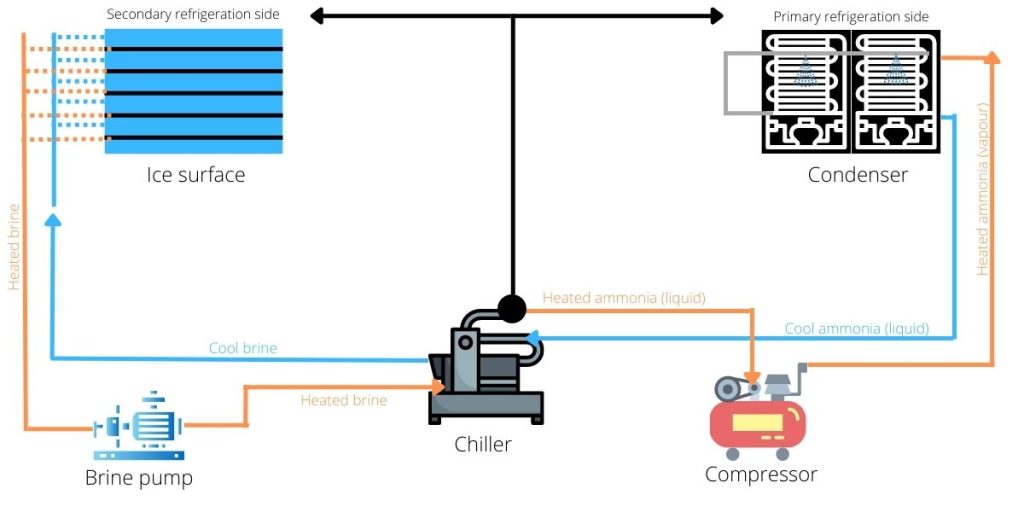
The ice is also made in layers. Approximately 8-10 layers of ice are used. The thickness of each layer can vary from 1/30 of an inch to 1/16 of an inch.
The first layer made is sprayed directly onto the concrete floor. This layer is about 1/32 of an inch thick. It will freeze almost immediately on contact with the cold concrete.
Once the first layer freezes, another super thin layer is sprayed. Once that layer is frozen, another layer is sprayed, and so on. This process will take place until the ice surface is the desired thickness.
The ice surface is also painted white in between certain layers which makes the puck much easier to see. Also, the lines, and other markings are painted on the surface as well.
An NHL ice hockey surface measures 200 feet long and 85 feet wide, and as mentioned can use about 10,000 gallons of water to complete.
Many ice hockey arenas will keep the ice surface in place for the entire season. But if the ice needs to be removed for other events, then replaced, the whole procedure of making new ice can take up to 48 hours to complete.
An NHL ice hockey surface is 3/4″ thick.
What is under the ice at a hockey rink?
An ice hockey rink can be broken into 6 different sections. They include:
- Ice surface – made into several layers.
- Concrete slab (chilled) – refrigeration system and pipes keep ice temperature at 16 degrees Fahrenheit.
- Insulation
- Concrete (heated) – The insulation and concrete layers prevent the ground below the ice from freezing which could expand and crack the ice.
- Sand and gravel – A sand and gravel layer sits on top of a groundwater drainage system.
- Groundwater drain – A water drainage system allows water to drain away.
How is the ice painted in a hockey rink?
When you look at the ice surface in a hockey rink, you will notice several different lines, circles, and markings. The blue line is painted blue, the center ice line is red, the circles are red, the goalie crease is blue, and other markings are colored.
To make these markings stand out in color, white powdered paint is mixed with water and then sprayed onto the ice using a 12-foot spray boom and pump. Several coats are needed.
Once the painting is complete, a layer of fine water spray is used to completely seal the paint which freezes.
The painting takes place on the lower layers to ensure the markings will be secure and not wash off or removed during play.
